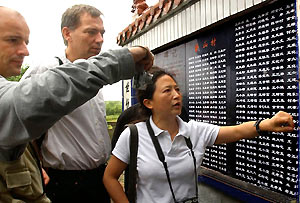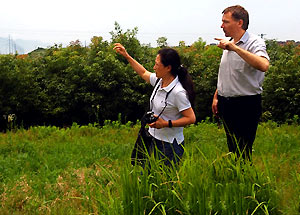| Tools: Save | Print | E-mail | Most Read |
| Former UN Weapons Inspector to Publicize Japanese Germ Warfare |
| Adjust font size: |
In an effort to inform the world on the subject of the germ warfare carried out by the Japanese in China between 1931 and 1945, a former UN biological weapons inspector has mounted a campaign on the subject. German biologist and former weapons inspector with the United Nations Monitoring, Verification and Inspection Commission (UNMOVIC) Jan van Aken has just completed a four-day research tour which started on June 8 and saw him visit war crime sites in China.
Van Aken said he would file the findings of his investigation with the sixth deliberation meeting of United Nations Convention on the Prohibition of Biological Weapons and their Destruction to be held in Geneva in November. He would also publicize Japanese germ warfare crimes to the world via the Internet and international media. "My nine-year-old younger brother suffered so much that he kept scratching the bed board with his bleeding hands," said Wu Shigen, a citizen of Quzhou, who escaped the atrocities. He explained to van Aken how his younger brother and sister died of the plague in 1942. Van Aken and Ziegler said they were overwhelmed by the evidence. "It's hard to express my feelings," said van Aken. "On the one hand it's distressing to see the long-lasting torture Japanese germ warfare brought to the Chinese people but on the other I'm grateful that Wang Xuan and the others are the living evidence of what happened." Studies by Chinese and foreign scholars have shown that between 1931 and 1945, Japanese troop Unit 731 with its human biological weapons laboratory and other units repeatedly practiced germ warfare in China.
|
| Tools: Save | Print | E-mail | Most Read |
 |
| Related Stories |
| Product Directory China Search |
Country Search Hot Buys |

